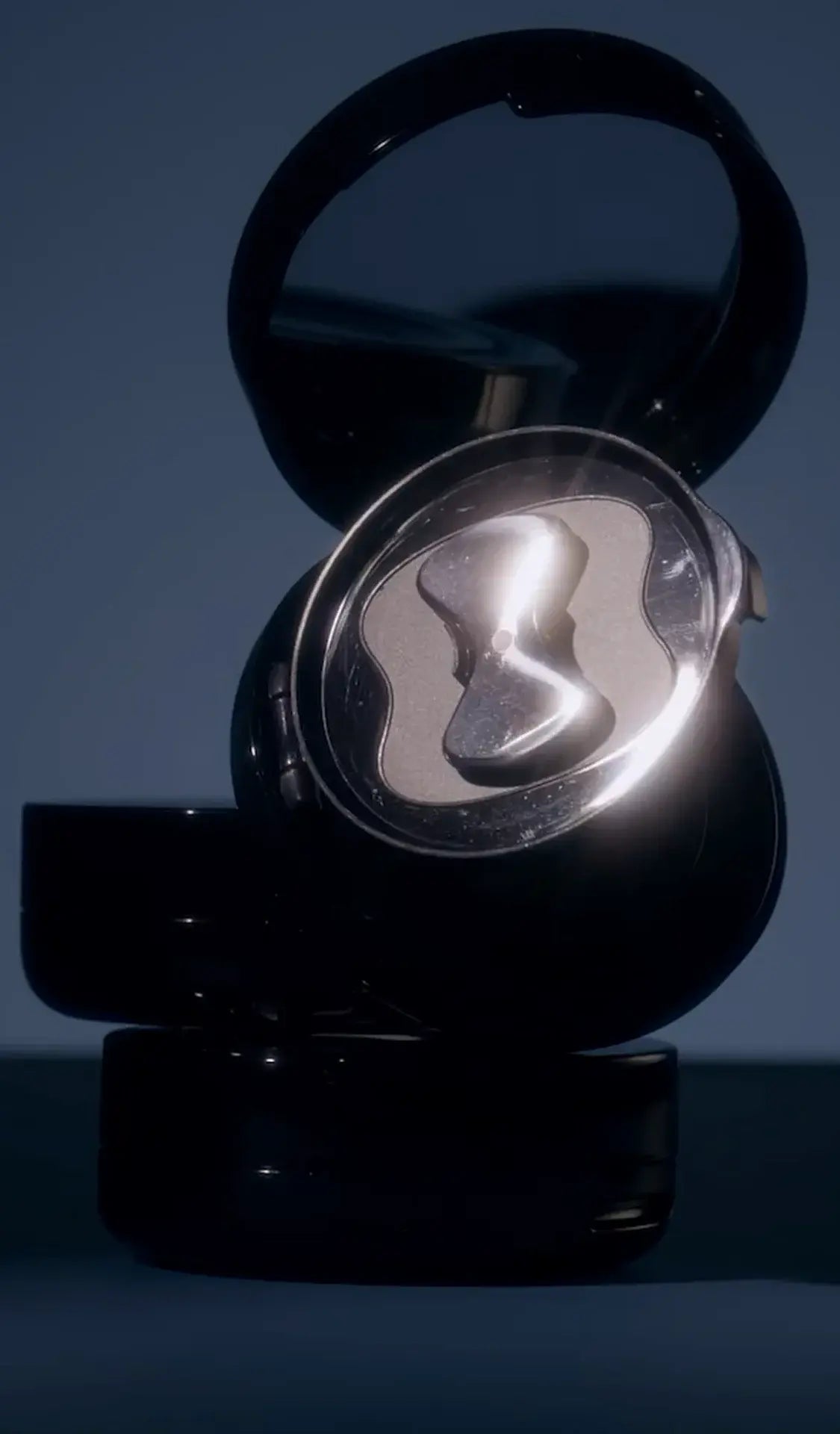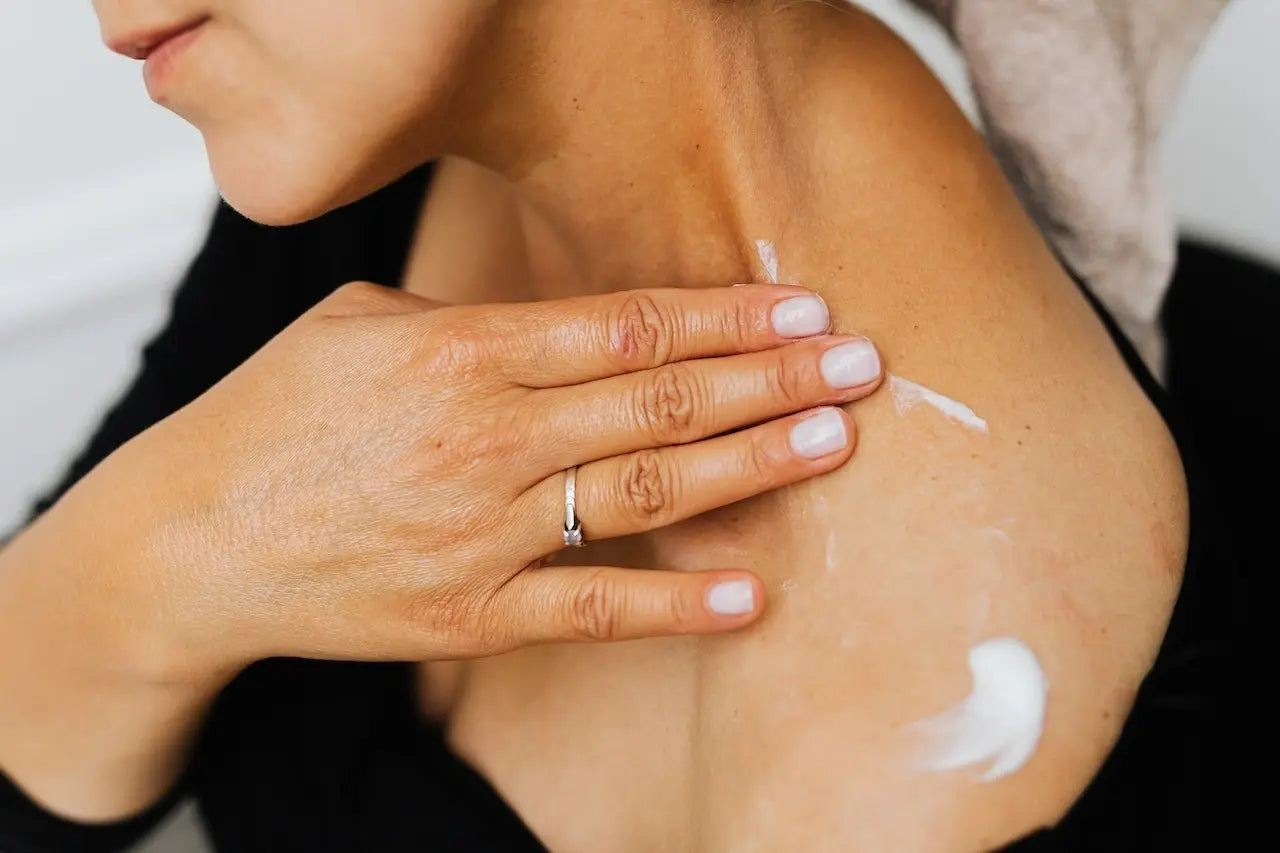Signs of Skin Barrier Damage
- Dry, Flaky Skin: A healthy skin barrier retains moisture and maintains a balanced hydration level. Damage can lead to moisture loss, resulting in skin that appears dry, flaky, and sometimes peels, revealing an inability to retain water.
- Itchy and Irritated Skin: Damaged moisture barrier symptoms can cause the skin to become unusually itchy and irritated. This discomfort arises as the skin becomes more exposed to environmental irritants and allergens, leading to inflammation.
- Painful Areas, Particularly Burning/Stinging: The application of skincare products, even those previously tolerated, can cause a burning or stinging sensation on damaged skin. This reaction occurs because the protective barrier is unable to shield the nerve endings within the skin effectively.
- Breakouts and Roughness: A damaged skin barrier disrupts the skin's texture, leading to roughness and acne breakouts. Without its protective layer, the skin is more susceptible to bacteria and pollutants that can clog pores and cause acne.
- Hyperpigmentation: Damaged or broken skin can affect the skin's ability to fight off UV damage, leading to an increased risk of hyperpigmentation. Sun exposure can cause dark spots and uneven skin tone, especially when the barrier is weakened.
- Fine Lines and Wrinkles: The loss of moisture and decreased production of essential lipids and proteins weaken the skin's structure, accelerating the appearance of fine lines and wrinkles as the skin loses its elasticity and firmness.
- Increased Skin Infections: A strong skin barrier acts as a defense against pathogens. When compromised, the risk of skin infections increases due to the easier penetration of harmful microorganisms.
- Delayed Wound Healing: A healthy skin barrier is crucial for the efficient healing of wounds. Damage can slow down the repair processes, leading to prolonged healing times and increased chances of scarring.
Signs of Skin Barrier Damage
- Dry, Flaky Skin: A healthy skin barrier retains moisture and maintains a balanced hydration level. Damage can lead to moisture loss, resulting in skin that appears dry, flaky, and sometimes peels, revealing an inability to retain water.
- Itchy and Irritated Skin: Damaged moisture barrier symptoms can cause the skin to become unusually itchy and irritated. This discomfort arises as the skin becomes more exposed to environmental irritants and allergens, leading to inflammation.
- Painful Areas, Particularly Burning/Stinging: The application of skincare products, even those previously tolerated, can cause a burning or stinging sensation on damaged skin. This reaction occurs because the protective barrier is unable to shield the nerve endings within the skin effectively.
- Breakouts and Roughness: A damaged skin barrier disrupts the skin's texture, leading to roughness and acne breakouts. Without its protective layer, the skin is more susceptible to bacteria and pollutants that can clog pores and cause acne.
- Hyperpigmentation: Damaged or broken skin can affect the skin's ability to fight off UV damage, leading to an increased risk of hyperpigmentation. Sun exposure can cause dark spots and uneven skin tone, especially when the barrier is weakened.
- Fine Lines and Wrinkles: The loss of moisture and decreased production of essential lipids and proteins weaken the skin's structure, accelerating the appearance of fine lines and wrinkles as the skin loses its elasticity and firmness.
- Increased Skin Infections: A strong skin barrier acts as a defense against pathogens. When compromised, the risk of skin infections increases due to the easier penetration of harmful microorganisms.
- Delayed Wound Healing: A healthy skin barrier is crucial for the efficient healing of wounds. Damage can slow down the repair processes, leading to prolonged healing times and increased chances of scarring.
How do you fix a damaged skin barrier?
Evaluate your skin care products
Consider taking a break from your complex regimen
Cleanse gently and moisturize liberally
Slowly reincorporate your products, one by one
Consult a dermatologist
How do you fix a damaged skin barrier?
Evaluate your skin care products
Consider taking a break from your complex regimen
Cleanse gently and moisturize liberally
Slowly reincorporate your products, one by one
Consult a dermatologist
Can a damaged skin barrier heal itself?
Can a damaged skin barrier heal itself?
How long does it take a broken skin barrier to fix itself?
How long does it take a broken skin barrier to fix itself?
How do you know if your skin barrier is healing?
How do you know if your skin barrier is healing?
Is my skin barrier permanently damaged?
Is my skin barrier permanently damaged?
- The skin is the largest organ of our bodies and is responsible for protecting us from harmful environmental factors such as UV rays, bacteria, and viruses. The skin barrier is an important part of our skin, as it helps to keep the skin hydrated and healthy. The skin also has a natural ability to heal itself.
- A damaged barrier can be caused by environmental factors and overuse of functional skincare ingredients. Most barrier damage is repairable, which starts by reevaluating each skin care product you use and only moisturizing for a few weeks.
- Nurturing a damaged skin barrier with moisturizer and addressing underlying inflammatory factors can help keep our skin barrier functioning as best as possible.
- The skin is the largest organ of our bodies and is responsible for protecting us from harmful environmental factors such as UV rays, bacteria, and viruses. The skin barrier is an important part of our skin, as it helps to keep the skin hydrated and healthy. The skin also has a natural ability to heal itself.
- A damaged barrier can be caused by environmental factors and overuse of functional skincare ingredients. Most barrier damage is repairable, which starts by reevaluating each skin care product you use and only moisturizing for a few weeks.
- Nurturing a damaged skin barrier with moisturizer and addressing underlying inflammatory factors can help keep our skin barrier functioning as best as possible.
- Based on data from clinical studies and/or lab studies conducted on human skin samples, 3D skin models, and skin cells in the OneSkin lab. Explore more at oneskin.co/claims
- https://onlinelibrary.wiley.com/doi/full/10.1111/jocd.16242
- https://www.nature.com/articles/s41514-023-00109-1
- Based on data from clinical studies and/or lab studies conducted on human skin samples, 3D skin models, and skin cells in the OneSkin lab. Explore more at oneskin.co/claims
- https://onlinelibrary.wiley.com/doi/full/10.1111/jocd.16242
- https://www.nature.com/articles/s41514-023-00109-1



